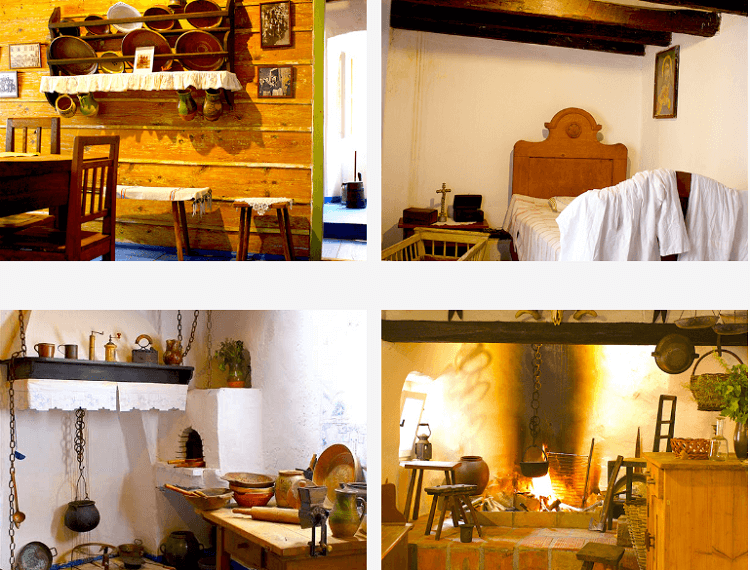The Island of Krk: Unmissable Destinations on Croatia's Golden Island
June 23, 2022 - While the Dalmatian islands remain the most popular among tourists, others like the island of Krk deserve your full attention and you don't even know it yet.
Let's try something. Go ahead and think of a Croatian island other than Hvar. Or Brac. Or Korčula. Or Vis. Or Pag. Or Mljet. Or Dugi Otok. Or Lopud. Or Lastovo. Remember, there are more than 1000 islands in Croatia! This is in no way a criticism. These islands are positioned better than any other and for the fairest reasons. The reputation of its beaches, nightlife, traditions, heritage, and more precedes them. The marine traffic in the Dalmatian islands is impressive, and it is understandable. However, some paradises on the northern Adriatic sea have little or nothing to envy the Dalmatian ones.
One of them is the island of Krk, located in the center of the Kvarner Bay and belongs to the Primorje-Gorski Kotar county. Krk has an area of 405.80 km2 and a population of almost 20,000 inhabitants and is the second-largest island in Croatia. Known as the ''Golden Island'', Krk is perhaps the most accessible island in the country. Why? For starters, Krk is connected by a bridge to the mainland, which allows residents and visitors to get around by car and bus very easily. In addition, Rijeka airport is located precisely on the island of Krk, so if you have booked an island accommodation and arrive by international flight, you will not have to worry much about how to get to your destination.
If the island of Krk is your choice as your next travel destination, you will enjoy a place that boasts an enormous history as it is home to the largest heritage of Glagolitic writing in the country, premium wines and olives, one of the most important pilgrimage routes in the world, Camino Krk; as well as being recognized as a health tourism destination, due to its impeccable air.
Although the island of Krk deserves to be recognized as a spectacular whole, in this article we share a little detail about the destinations that you can visit on the island.
Omišalj
Omišalj is a historic town located on the north-western part of the island of Krk and situated at 85 meters above sea level. Omišalj's privileged position seems to have attracted not only modern humans but also prehistoric inhabitants, which explains why Omišalj has existed for more than 10,000 years. Omišalj is one of the oldest towns on the island and today it is an important glagolitic and cultural center. Learn more about Omišalj HERE.

Image: Krk Island Tourist Board
Njivice
Njivice is located very close to Omišalj and belongs to the Municipality of Omišalj. Also with a rich history, Njivice has been inhabited mainly by fishermen, olive groves workers, and cattle-breeders. Njivice has always stood out for its picturesque houses along the shore and the fishermen's boats and nets, creating a typical postcard of the place. Njivice today has modern and high-quality accommodation, including hotels and camping sites. Learn more about Njivice HERE.

Image: Arne Müseler/Wikimedia Commons
Malinska
Malinska is one of the most popular destinations on the island of Krk, and in addition to its excellent beaches and accommodation options, it has an important marine heritage. Malinska, surrounded by forests, was once a timber export port and a favorite destination for the Viennese aristocracy. Due to its position, Malinska was also an anchor point for many ships to protect themselves from strong winds and tides. Today Malinska has a new and modern interpretation center, and the old shipyard is still operating on the same site. Learn more about Malinska HERE.

Image: Arne Müseler/Wikimedia Commons
Krk Town
The town of Krk is the administrative, political, economic, and religious center of the island of Krk. It is the town with the most inhabitants on the island, with a population of approximately 7,000 inhabitants. It is worth mentioning that the town of Krk was mentioned by the famous Greek writer Homer in a poem under the name of Koureto. Undoubtedly, the highlight of Krk is its impressive cathedral complex, built in the 5th century. Learn more about the town of Krk HERE.

Photo: Mario Romulić
Punat
Punat is located on the east coast of the island of Krk and is considered one of its most popular destinations. Despite being considered the most recent town on the island, Punat also boasts a lot of history, culture, and heritage. There you will find not only one of the most modern nautical and marina centers in the entire country, but Punat is also the main olive-growing center on the island. When speaking of Punat, it is always necessary to refer to the small island of Košljun, where a Franciscan monastery is located. Learn more about Punat HERE.

Image: Krk Island Tourist Board
Baška
Baška is located at the southern tip of the island of Krk, and is definitely one of the most prominent destinations. No matter what angle you see it from, the beauty of Baška is undeniable. In addition to its spectacular and extensive beach, Baška also stands out for the architecture in its old town, as well as its various cultural and historical monuments. Baška can boast of being a very important part of Croatian history, as it is there that the Baška tablet was found, one of the first monuments containing an inscription in the Croatian recension of the Church Slavonic language, dating from c. 1100 AD, thus being one of the most important elements of the Glagolitic script. Learn more about Baška HERE.

Image: Krk Island Tourist Board
Vrbnik
Vrbnik is indisputably one of the most famous settlements not only on the island of Krk but in all of Croatia. Vrbnik is well known for its Glagolitic heritage and especially for its delicious wines, and in particular is its golden-yellow wine – the Žlahtina, with a great national and international reputation. It's not the only old town on the island of Krk that sits on top of a hill, but Vrbnik sits on a large cliff by the sea, giving it a wonderful view into the distance. Learn more about Vrbnik HERE.

Image: Arne Müseler/Wikimedia Commons
Dobrinj
Dobrinj is located in the upper part of the island of Krk, to the east. Dobrinj includes other places of interest such as Šilo or Klimno, but surely the first thing one should do is visit the main town, which stands on a 200-meter-high hill. Dobrinj is very reminiscent of the settlements one can find in central Istria, also on hills. A beautiful destination without a doubt, surrounded by thick forests and with a great Glagolitic heritage. Likewise, many other important traditions stand out, such as its folkloric events, its typical costumes, its school of wind instruments, and its home cuisine. Learn more about Dobrinj HERE.

Image: Arne Müseler/Wikimedia Commons
For more on travel in Croatia, follow TCN's dedicated page.
4 Islands MTB Race on Krk, Cres, Lošinj and Rab Becomes Part of Ironman Epic Series
April 12, 2022 - The 4 Islands MTB Race is a five-day mountain bike race whose primary goal is to promote mountain biking as a recreation, hobby, sport, and lifestyle.
This year differs from events in the past in that the Ironman group bought the Kvarner race and presented the "4 Islands MTB race" as part of their Epic series. Thus, Croatia and Kvarner will stand alongside Switzerland, Australia, New Zealand, Wales, Andorra, and South Africa. The additional value of this event is the promotion of the Croatian islands of Krk, Rab, Cres, and Lošinj as cycling destinations and improving cycling tourism as an alternative form of tourism in Croatia.

Vedran Metelko
In five days, the cyclists will cover 270 kilometers of trails and over 5,000 meters of total altitude. The race takes place every day on a different island, which is a demanding logistics and an unforgettable experience for competitors and companions. It gathers about 600 competitors from more than thirty countries worldwide, and thanks to the professional and intensive organization, participants can enjoy events in a family environment and concentrate only on their competition.

Ivan Sardi
Thanks to the top initiative of the hosts and their pleasant welcome, hard work of the organizing team, and excellent cooperation with partners, the synergy of sports and off-season tourism is achieved in Croatia, which is at its peak, and returning competitors have recognized this for several years. The race is held at the beginning of the cycling season, so it is conceptually arranged to extend the tourist season and open the cycling season of training and outdoor racing after winter.

Ivan Sardi
It is possible to compete in several categories, thus enabling fair participation of competitors of different age groups and combinations. Furthermore, racing side by side with the professionals of this sport is something that makes this race and cycling itself exceptional. It is an amateur race side by side with professionals that allow the interaction of amateurs and lovers of the sport and their idols.
The project organizer, Tomislav Zobec, revealed that the vision of the project is to position the 4 Islands MTB stage race as one of the most recognizable stage mountain bike races in the world and achieve a sustainable project for the company and the local community.
"We want to promote mountain biking and provide users with a unique cycling experience in unique locations and become a race with the world's strongest names in the sport."
"We are delighted to participate in such an event because this is another opportunity to position ourselves as an important destination for cycling tourism. Both Baška and the island of Krk and the whole of Croatia are still insufficiently discovered pearls for tourists looking for adrenaline, rest, and great experiences of the destination. We have just all of that, and that is why we are big supporters of such events, and I hope that there will be more and more of them. It is an honor and pleasure to be a part of this beautiful and truly inspiring story," said Ivana Topic, the Baška Tourist Board director.

Ivan Sardi
It is important to emphasize that the trails on all four islands are cleaned and prepared every year. After the race, they are enjoyed by many walkers, runners, and cyclists. Most of the trails that were or are part of the race today are part of the island's tourist offer.
The race takes place from April 19 to 23, 2022.
Baška, 19.4.2022.
STAGE 1: Krk, 20.4.2022.
STAGE 2: Rab, 21.04.2022.
STAGE 3: Cres, 22.04.2022.
STAGE 4: Lošinj, 23.04.2022.
To follow the latest sports news in Croatia, follow TCN's dedicated page.
How Much for a Cold Drink on Krk Island? Just Give Baba a Kiss
An ancient custom on Krk island involves planting a kiss on a wet rock on the side of the road. Looking into the curious ethnological phenomenon on February 1, 2022
Many holidaymakers have discovered the charms of Baška, a picture-perfect town on Krk island. There’s plenty for this dreamy destination to boast, including a 1800m long pebble beach ideal for those who love to soak up the sun, and adventure trails for visitors who prefer an active vacation.
Visiting Baška wasn’t such a simple feat back in the day, judging by an ethnological phenomenon described by Alan Žic-Teklin of KrkDiscovered. When arriving in Baška for the first time, one was obliged to kiss a wet old woman on the way to town. No, this doesn't sound any more enticing nor any less wrong in Croatian: poljubiti mokru babu.
(Baba stands for old woman, crone or grandma, depending on the context. In this scenario, it falls somewhere between the first two, but we’ll go with the more respectful option to avoid upsetting any ancient spirits. You never know.)
Thankfully, this particular baba was simply a common nickname for stone monoliths scattered over the island. Always located in damp spots near water springs - hence the wet part of the name - the rocks were referred to as babe and the custom dictated to give them a kiss when passing by.
Where did this come from? Legend has it that St Jerome (4th century AD) was visiting the bishop of Krk and got thirsty while traversing the island. He hit a rock with his staff, causing water to spring from stone.
Since one would have to lean close to the rock and press their lips against the surface to get a drink of water, this would have resembled kissing the rock, and so the saying was born.
Legends aside, the local custom of kissing the stone baba has long been a subject of interest of historians and ethnologists. Jelka Vince-Pallua, PhD proposed a theory that the custom originates from ancient fertility cults that were practised before the monoliths, while ethnologist Nikola Bonifačić-Rožin considers that the ‘old women’ stem from an ancient superstition that the rocks will prevent the floods from washing away precious fertile soil.
The best known baba on Krk island used to be located on the side of the road at the locality Žanac near Baška. The ancient rock isn’t there anymore and has been replaced with another one, but to keep up with tradition a pipe has been installed on the location, allowing passersby to get a drink of cold water.
And the new rock that stands in place of the old monolith? It’s part of the Baška Glagolitic Alphabet Trail, a series of 35 stone sculptures displayed on a trail meandering through the Baška Valley, each bearing a different letter of the Glagolitic alphabet.
Glagolitic letters Ž and E are carved into this particular stone, standing for Žanac est! Loosely translated, it means ‘Here is the Žanac spring!’ pointing to the wealth of water resources in the area. As early as the Stone age, people inhabiting Krk island first settled in Baška Valley precisely for its many water springs.
Even though it’s not the original baba, the sculpture allows travellers in passing to respect the ancient custom and give baba a peck on the cheek if they so decide. Don’t find the prospect that enticing? You can simply mark the sculpture on your Glagolitic Trail guide - every monument has a small plaque with raised letters you can copy into the blank pages in the guide. (Copy them all as proof you visited all the locations on the trail, and you get a little gift.)
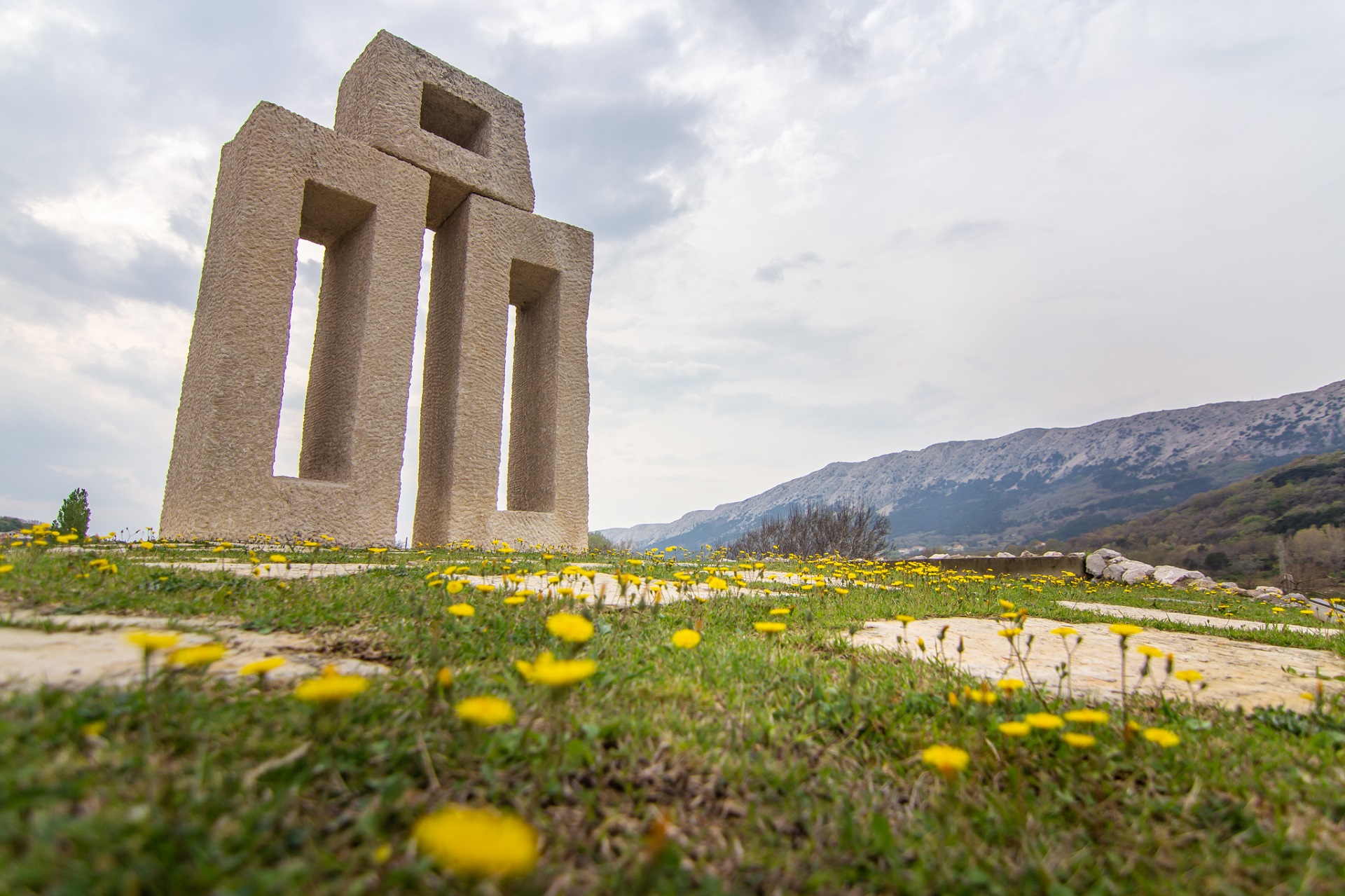
The letter L, sculpture by Ljubo de Karina / visitbaska.hr
The Glagolitic Trail project was devised by the Sinjali Association for culture, tradition and ecology from Krk. Each sculpture was sponsored by a different town; four were created by the renowned Croatian sculptor Ljubo de Karina, the rest were made by fifteen art academy students from Croatia, Slovenia, Austria and the Czech Republic.
The trail was created to highlight the rich cultural heritage of Krk island and to serve as a reminder of the importance of the Glagolitic alphabet in Croatian history. The Baška tablet in particular - perhaps the most distinguished attraction in Baška, at least where Croatian culture and history are considered.
Discovered in the church of St Lucy in Jurandvor and dating to 1100, the limestone tablet is a legal document bearing an inscription where the Croatian name (hrvatski) is mentioned in writing for the first time in history, in Glagolitic script.
You can learn more about the Baška Glagolitic Trail in this pdf guide, and follow Krk Discovered on Facebook.
Project to Upgrade Port of Baska Launched
ZAGREB, October 22, 2020 - An agreement on the extension of the port of Baska on the northern Adriatic island of Krk was signed on Thursday. The project is worth HRK 41.1 million, of which HRK 39.7 million will be provided by the EU and the rest by the county port authority.
The work will be carried out by the Aqua Mont Service company and will include extending the existing quay and ensuring necessary protection of the waters within the port area and appropriate berths for passenger ships. The deadline for completion of the work is December 2023.
The signing ceremony was attended by the Minister of the Sea, Transport and Infrastructure, Oleg Butkovic, who said that a large cycle of investment in ports and coastal zones had been launched in all seven coastal counties.
"We are talking over a billion kuna worth of active projects with 85% of financing provided by EU grants," Butkovic said, adding that five such projects were being carried out in Primorje-Gorski Kotar County.
(€1 = HRK 7.57)
Smiljan Radić and Marcela Correa Start Work on Art Installation
March 4, 2020 - One of the most renowned architects in the world, Smiljan Radić from Chile and his partner, the Chilean sculptress Marcela Correa started working on their art installation called "The Drops", which is to be installed permanently on the tops of the hills above Baška on the Krk Island.
Smiljan Radić is Chilean, but with Croatian roots, and his art creation is to be installed on Krk as a part of the Rijeka 2020 and the program Lungomare Art, tportal writes. The sculptures will be placed next to the dry stone walls locally called mrgari (and by locally I mean that I've never heard of the word before today, having been born and raised in Croatia). Mrgari are the functional structures created by the dry stone walls, to limit the movement of sheep and protect the plants within them, built to create the shape of a flower. There are only two places in Croatia where you can find them, on Krk and on the neighbouring island on Prvić, and on two more places in the world: on Iceland and in Wales.

Photo by: Kristijan Vučković
Smiljan Radić's and Marcela Correa's installation next to the walls will put the additional accent on the area, already well-known to both locals and tourists, while at the same time respecting the values and the structure of the walls, and without aiming to dominate over them by their shapes or materials. The final installation is planned for October of this year, but the creation of the installation has already begun, in partnership with the Croatian company Bokart from Dugo Selo near Zagreb. The drops will get to Baška in trucks, and then will be put on the hill with the helicopter assistance. Currently, the work that's being performed is the creation of the models for the glass, which needs to undergo several months of drying.
Krk Food Fest: Gourmet Heaven in Baska, Punat & Vrbnik
May 6, 2019 - Day 2 of the recent Gastronaut foodie tour of the Krk Food Fest had a decidedly Glagolithic flavour.
Foodie media association Gastronaut embarked on a 3-day tour of the island of Krk last month, ahead of the annual Krk Food Fest which runs until May 31. It is an exciting gourmet time of year with Spring flavous and ingredients combining with some innovative chefs to produce a delightfully varied gastronomic offer. Gastronaut itself, led by Karin Mimica, is famed for organising the maximum possible in terms of gourmet and cultural experience in the shortest time. Day 1, for example, included visits to no less than 11 restaurants and wineries, which you can read about the first day here. Looking at the programme, the second day was due to be no less intense or fascinating.

And so it proved. A leisurely start from Hotel Drazica in Krk and a guided tour around the historic Krk. The island has been inhabited uninterrupted since the Neolithic age, and Christianity appeared early, with the town of Krk having its own bishop as early as the 5th century. It is a delightful and compact small town, with plenty of features to reflect its various influences over the centuries.

Arguably the highlight of the day, however, was my discovery of the fabulous Baska, a destination I knew nothing about prior to the trip, but which seemed truly to have everything on offer, including the rather fascinating Glagolithic script, which Baska is promoting in a very educational and adventurous way.
The script is thought to have been introduced by Saint Cyril, of Cyrillic script fame, back in the 9th century, and it is regarded as the oldest Slavic script. While its use at one time was fairly widespread in the Slavic world, it was preserved only the clergy in Croatia - particularly in the Kvarner region where Krk is situated - and was used in the writing of Church Slavonic until as late as the 19th century.

The discovery of the Baska tablet in the paving of the Church of St Lucy in Jurandvor near Baska, back in 1851 was a significant find - the tablet dates back to 1100 - and Baska has done a magnificent job establishing itself as a 'spiritual home' to Glagolithic.
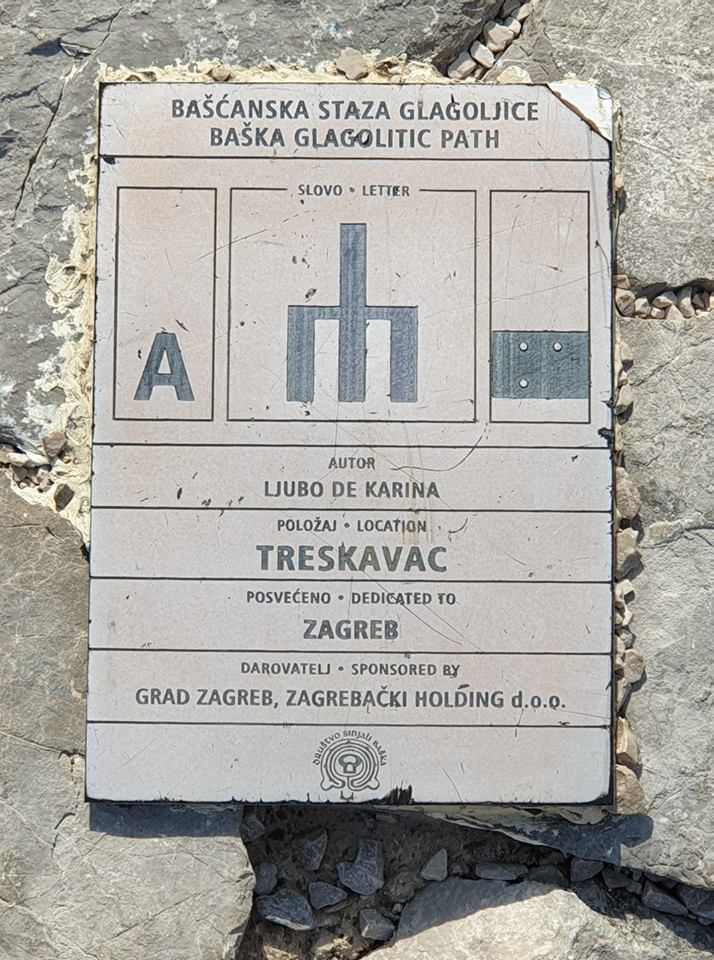
Visting Baska and its surroundings one cannot miss the Baska Glagolithic Path, a wonderful project of education, in which each of the Glagolithic letters is celebrated in stone (see the letter 'A' rising majestically in the photo above). Each latter has an accompanying plate which explains which letter it is, the location, sculptor, and the donor. Baska launched a nationwide appeal to support the project, and various locations around the country responded magnificently. Each location has a particular relevance to the letter, and you can learn more about this fascinating project - and learn the Glagolithic alphabet at the same time - in this detailed explanation by the Baska Tourist Board.

Right next to the Glagolithic letter 'A' - something altogether more modern for an island which I was quickly discovering really did have something for everyone.

And then we saw it. Baska, in all its glory - what a delightful beach in the heart of the town.

We were here for the Krk Food Fest of course, and it had been a while since breakfast, so time to attack the first restaurant of the day, Heritage Hotel Forza, which this year celebrates its 30th birthday. With dishes like surlice (hand-made Krk pasta), asparagus and prawns, above, there is no doubt that Forza will be feeding guests quality food for another 30 years and more.
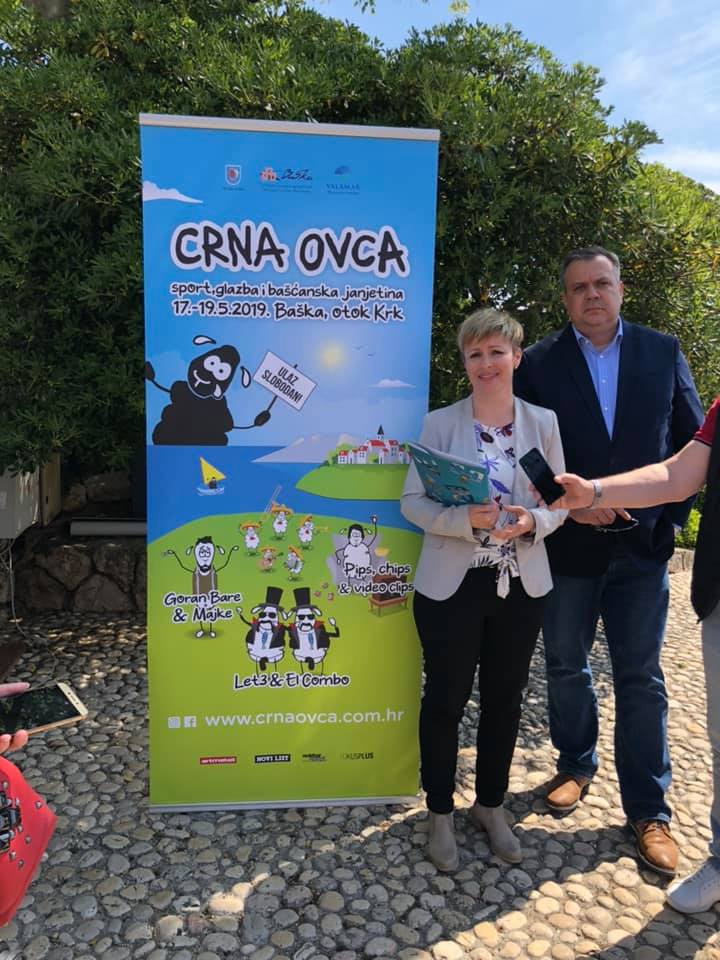
We were then introduced to what looks like a perfect family festival taking place from May 17-19, with free entrance - the Black Sheep Festival. Great name on this island of lamb. Here is how the festival introduces itself:
And the official trailer below gives you more of a feel. It is in my diary for next year. You can learn more about the festival on the official website.

It was time for more food, and could there be a more perfect location than Cicibela, right on the water in the middle of the beach. A divine spot, more than matched by its seafood specialities.

Ah yes, summer is on the way.

One cannot sit for long in paradise when Karin Mimica is running the tour, however, for there is just so much more to see. Next stop Punat and the Marina restaurant, where we were treated to excellent finger food, comprising asparagus, seafood and lamb specialities. Delicious.

Next up, a short boat trip to the island of Kosljun, which is nestled in the bay close to Punat, and home to a few Franciscan friars who live in the monastery there.

It is an island of incredible peace and tranquility, as well as housing some fascinating museum exhibits, documenting the history of the region.
And a truly friendly tour guide, who waved us off enthusiastically after our short tour.

We hadn't eaten for at least 10 minutes, and Bocoon on the waterfront in Punat was on hand to solve that problem.

I have vague memories of my first visit to Krk back in 2006 when my wife was in Rijeka hospital for the birth of our first child, the strongest of which is the picturesque old town of Vrbnik. It was where I first became acquainted with the local Zlahtina golden wines, and it was a pleasure to visit again, via a glass of sparkling at the Ivan Katunar winery at the entrance to Vrbnik.

This latest visit to Vrbnik came with its own challenge for fat bloggers, allegedly the narrowest street in the world.

I am not sure about the authenticity of that claim, but it is a street not recommended when you have been eating and drinking for two days with Gastronaut.
Squeezing through was well worth it, as we were rewarded with nibbles and a glass of wine from the Sipun winery in Stara Verbanska Kuca, a superb little museum in an old house in Vrbnik, celebrating life as it once was. The owner is apparently Russian, and he fell in love with Vrbnik and wanted to put something back, so he appealed to locals to donate items from Vrbnik's past. The result is more than impressive.

As with every Gastronaut trip, there were plenty of new discoveries, including the Sipun Trojiscina rose, a red grape variety which was all but extinct, but grows on Susak and Krk, and is being resurrected by the Sipun winery.

With all the lunches finished, it was time to think of dinner, but not before a little aperitif on the outstanding and spacious Nada terrace, a great family restaurant which served up a 5-course special.

There was just one more stop before Karin would allow us to rest our weary limbs, and one I was particularly looking forward to - Vonotel Gospoja, the first wine hotel in Croatia, about which we have written before.
I have to say that I loved it, a really interesting concept, and in terms of what is happening in the kitchen, I will leave you with these. To be explored at a later date.
I am sure that all this talk about food is making you hungry. So why not head to the Krk Food Fest which runs until May 31. More details here.
World's Biggest Welcome in Croatia: Day 7 (Off), Day 8 - Malinska to Senj (Bike, Foot, Kayak)
April 3, 2019 - Putting Croatian adventure tourism on the map, with the biggest welcome in the world. Day 8 of this incredible 2011 adrenaline trip covering 2,500 km along the Croatian coast.
The World's Biggest Welcome, an ambitious adventure tourism project in 2011 in Croatia enters Day 8 of this 2019 appreciation of one of the finest tourism promotion projects ever in Croatia.
The plan? To showcase the diversity and fabulous offer of adventure tourism in Croatia by following a GPS route the length of the Croatian coast in the shape of the word 'Welcome' - thereby creating the biggest welcome in the world from a hospitable tourism country.
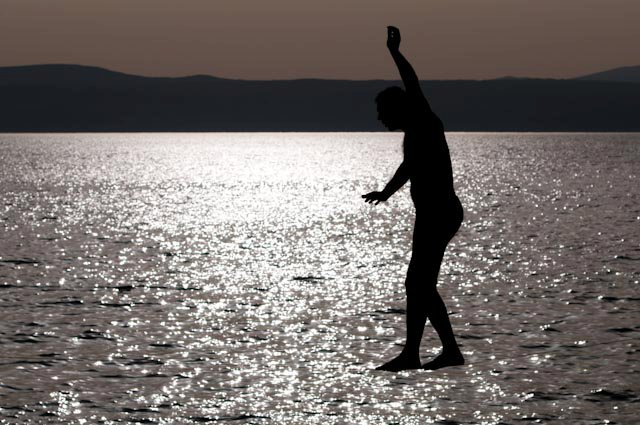

Off day in Nijvice
Day 8 moved on foot, bicycle, and kayak from Malinska to Senj.

57 kilometres for the day: 25 km bicycle ride from Malinska to Stara Baška, followed by 10 km on foot from Stara Baška to Baška, before 12 km of kayaking from Baška to Senj to begin forming the 'E' of 'Welcome'.

After some much-needed rest, Day 8 kicked off in Malinska.

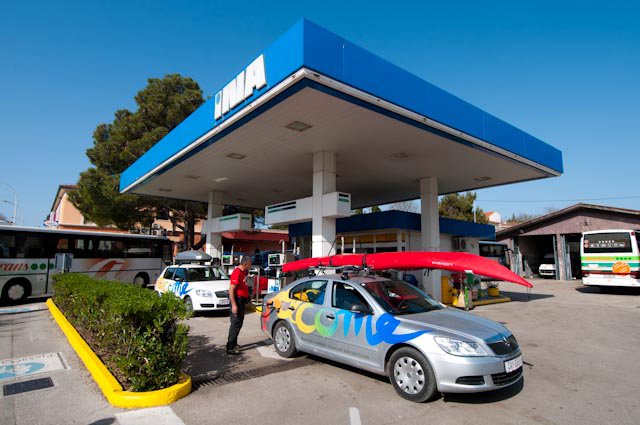
With a stop for petrol in Krk.

Lačko pedaling away in Punat on Krk.

Sheep on the road to Stara Baška.

And the hiking route on the way to Batomalj.

On the plateau between Baška and Stara Baška, father and son duo Zeljko and Martin Ivnik joined in on the walk.

Another look at the plateau.

From Baška, Daniel set off on a 12 km long rowing trip to Senj.

With the windmills above Senj in the backdrop.

Upon arrival, a Senj shepherd showed off a newborn lamb.

And a well-deserved meal to end at Lavlji dvor tavern in Senj. Lačko and master Željko checking out the skampi and St. Peter's fish.
A key part of the project was promoting tourism, and the official website has details of the key places visited during the day.

Malinska.

Baška.

Senj.
You can see the entire project on the Welcome website, as well as much more of Luka Tambaca's stunning photography on the Welcome Facebook page.
Tune in tomorrow for Day 9, as Lačko moves from Senj to Begovo Razdolje by bike and on foot.
To follow the whole project from the start, follow the dedicated TCN page.
New Croatian Ferry Line from Baška to Lopar to Operate All Year
New ferry lines are always needed, and it's one of the top complaints of Croatia's permanent island inhabitants, as the availability of their connection to the mainland is often governed too much by the tourist season. Primorje-Gorski Kotar County has decided to introduce a new Croatian ferry line which will connect the Municipality of Lopar and Baška, located on the nearby island of Krk.
As Morski writes on the 30th of November, 2018, Primorje-Gorski Kotar County has launched a welcome new ferry connection between Baska and Lopar, and the move was announced Primorje-Gorski Kotar County's deputy prefect, Marina Medarić.
Novi List reported that she spoke to the press on the matter and stated that the proposal for confirming the establishment of a year-round ferry connection which will cover the line of Baška-Lopar-Baška, will be one of the points of the County Assembly session this week.
The initiative was initiated by the Krk Harbour County Administration, and so far, the plans are for the connection to run once weekly during the more sparse winter months, twice weekly during the pre-season, and in the very height of the summer season, as many as four times per week.
If the County Assembly approves the proposal, the procedure of a public tender will be launched, where all interested shipping companies who desire to carry out the activity of this line will be able to make their interests known and submit their bids.
Make sure to keep up with our travel and news pages for more information on any other new Croatian ferry line, as well as for all the goings on from up and down the country, from continent to coast.
Click here for the original article by Tihana Tomicic for Novi List
"Crna Ovca" Festival Begins on Krk This Friday
A unique festival on the northern Adriatic island.
A Tour Guide's Work Is Never Done: Tourism Workers Preparing for the Season on Krk Island
No matter how much expert knowledge one has of a certain destination, there's always room for improvement. More than 80 tour guides gathered in Baška town on Krk island to gain more insight into the renowned historical sites



